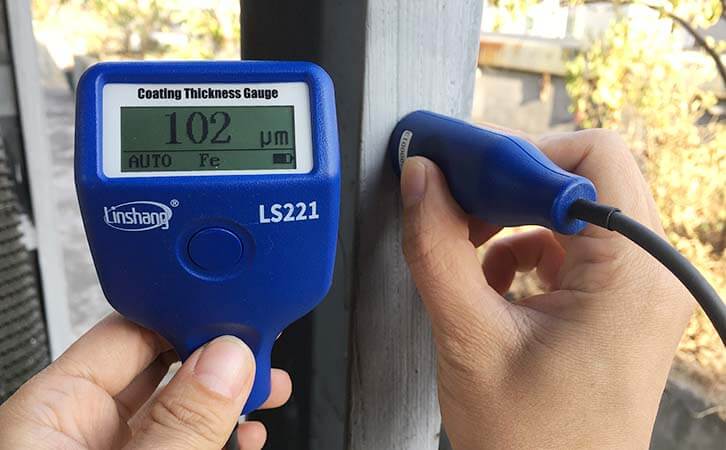Cured Powder Coating Thickness Measurement | Powder Coating Thickness Gauge
All cured powder coating thickness must be measured regularly. Regular powder coating thickness measurement helps control material costs, increase efficiency and maintain the quality of the finished powder coatings. Powder coating manufacturers usually recommend using a powder coating thickness gauge to control the powder coating thickness within a reasonable thickness range to help the product achieve the best performance and this is also what customers want.
Powder coatings need to be measured with different instruments before and after curing. For uncured powder coating thickness, we recommend to measure it using power coating thickness gauge. Every powder coating operator should know this powder coating thickness gauge and how to use it.
1. Why do we measure powder coating thickness?
Coating thickness is arguably the most important measurement in the application and inspection of protective coatings. Powder coatings perform their intended function within the thickness range specified by the manufacturer. Many physical and appearance characteristics of the finished coating are directly affected by the dry film thickness (DFT). Powder coating thickness will affect the color, gloss, surface profile, adhesion, flexibility, impact resistance and hardness of the coating. When the powder ocaitng thickness is not within the tolerance range, the parts assembled after coating will also be affected.
There are other benefits to measuring coating thickness accurately. Regardless of meeting the requirements of the International Organization for Standardization (ISO), customers' requirements for process control or quality, companies need to control the quality of their coatings to avoid costly rework.
2. Powder coating thickness measurement
The most common method for measuring the cured powder coating thickness is powder coating thickness gauge . The powder coating thickness gauge is a handheld instrument with low cost which is easy to operate. It can be divided into magnetic induction, eddy current and ultrasonic powder coating thickness gauge according to different powder coating thickness measuring principles.
When powder coating is based on ferrous metal such as steel, a powder coating thickness gauge based on the principle of magnetic induction can be used. During the measurement, a magnetic field is generated by the electromagnetic coil. The magnetic field changes as it approaches the magnetic substrate. The change of the magnetic field depends on the distance from the metal substrate to the detector, that is, the powder coating thickness and usually does not require any calibration adjustments.
3. Recommended powder coating thickness gauge

Linshang LS221 powder coating thickness gauge requires zero adjustment without calibration. When customers need to measure non-conductive coatings such as coatings, anodized layers or ceramics on non-magnetic metal substrates such as copper, aluminum, die-cast zinc, brass, etc. They can choose a powder coating thickness gauge based on the eddy current principle.Due to its simple operation, multiple functions and high accuracy, Linshang powder coating thickness gauges are the choice of most powder coating manufacturers. Linshang powder coating thickness gauge is a dual-use powder coating thickness gauge for both ferrous and non-ferrous substrates. It uses both magnetic induction principle and eddy current principle.When measuring, you can choose the corresponding measurement mode according to the base material of the coating. The measurement results are displayed on LCD. As a professional powder coating thickness gauge manufacturer, Linshang Technology also provide other coating thickness gauges. For other coating thickness measurement requirements, please read "Coating Thickness Gauge Selection and FAQ".
- High precision coating thickness gauge for used car
- Automotive paint protection films coating thickness gauge
- Plating Thickness Measuring Instrument for Detecting Anti-corrosion Coating
- Linshang LS220, LS191, LS160A– Necessary for Car Cover Inspection
- Coating Thickness Gauge for Second Hand Vehicle
- Zero Adjustment Step of Coating Thickness Gauge